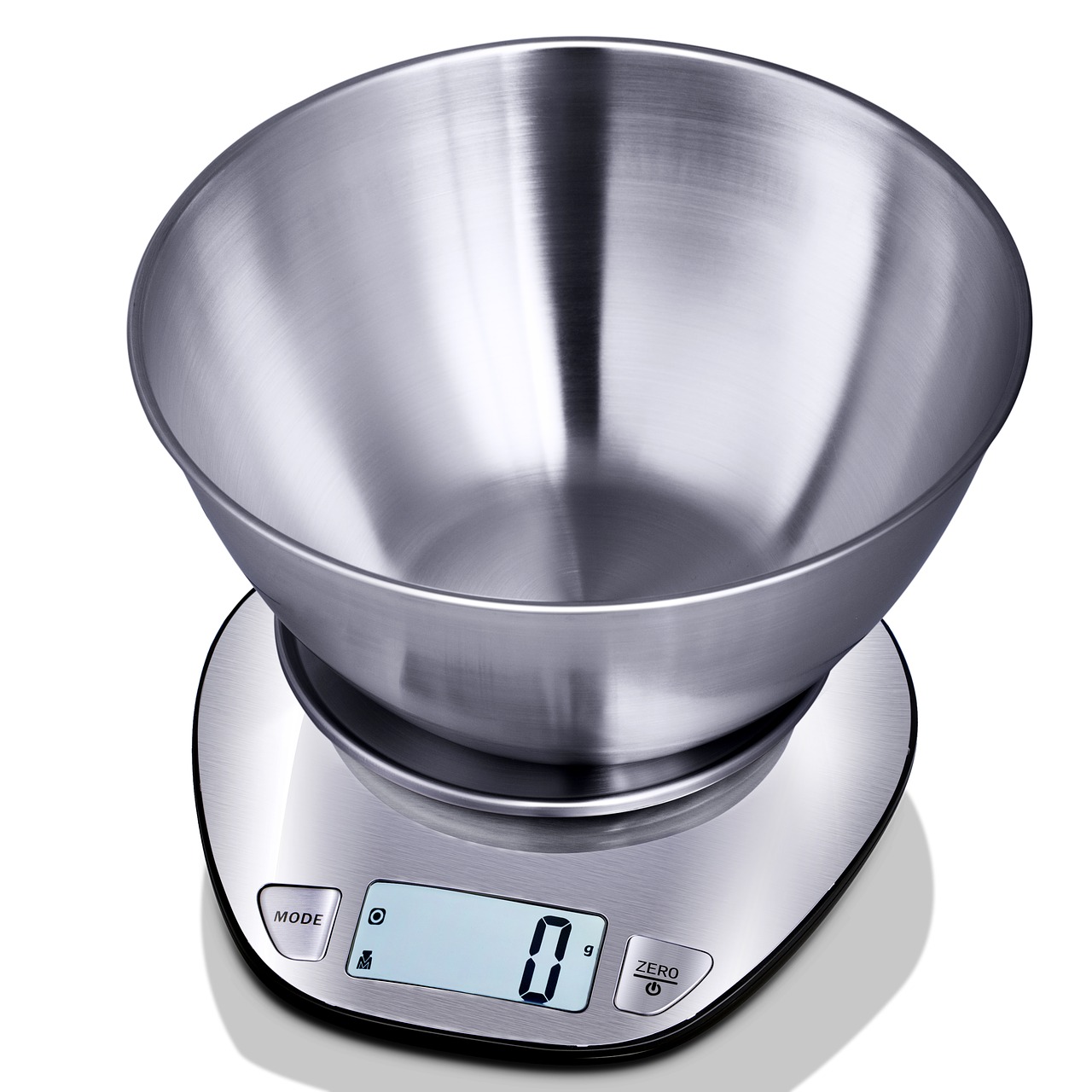
the scientific study of pet nutrition by veterinary nutrition specialists and experts.
Should You Be Weighing Your Pet’s Food?

‘How much are you feeding your pet?’ is a common question you’ve likely heard when your dog or cat has a visit to the veterinarian. But how accurate is the answer you might be giving? Weighing out your pet’s food may help your veterinarian better understand your pet’s needs and provide more tailored recommendations.
Diet History
Whenever I ask about the diet history of a cat or dog, the goal is to get enough information that I could feed your pet exactly the same as you do without needing any more instructions. That includes exact product names and flavors of any treats or pet food with enough detail that I could find it easily in a store or online. It also includes the exact amount you are feeding and how you are measuring it, just like details you would provide to a pet sitter, for example, “We use a 2 cup measuring cup and fill it level to the 1 and 1/2 cup line twice daily.”
What’s In A Cup?
When meeting with families, especially for those where weight management is a concern, I usually ask them to bring in all the foods and treats they give their pet, as well as the cups and bowls. Why be that specific? I have been very surprised to see the variety of ‘cups’ that families may use. Some use standard measuring or baking cups, while others use scoops without measurements on them, mugs, or in some instances, even 64 oz big plastic cups from convenience stores!
Counting Calories?
Most pet food companies provide calorie information on a per cup (or per can) basis, but that assumes an 8 fluid oz standard cup with the food exactly level to the top. This can be confusing because fluid oz is not the same as weight oz: 8 fluid oz is a volume measurement, so a cup of feathers and a cup of rocks would both be the same volume, but obviously weigh very different amounts! Using other types of cups may not be accurate and doesn’t allow for an exact calculation of how many calories your pet is getting per day. Pet food companies also provide calories on a weight basis (usually kilograms). An example might be 3,750 kcal/kg. This means that for every kilogram of pet food, there is 3,750 calories in the food (or 3.75 calories per gram of pet food).
The Argument For Weighing
Research studies have shown that measuring food by volume (i.e., cups or cans) often leads to either under or overfeeding since it can be challenging to measure a cup exactly level to the top, especially with larger kibble sizes. When I start weight loss plans, I often recommend that families instead measure out their pet’s food by weighing it. Not only is this more accurate, but it helps me as their veterinarian make better recommendations like when to switch foods. For cats and smaller dogs, the amount needed may be a small volume which also makes rounding to the nearest volume measurement challenging. It is nearly impossible to measure 2/5 of a cup accurately! Similarly, it is difficult to accurately measure 1/3 or 5/8 of a can.
How Would I Weigh The Food?
Once you know how many calories your pet needs per day , you can determine how many grams your pet needs by checking the pet food bag and weighing the amount on a small kitchen scale. For example, let’s say a 12 lb cat is at an ideal body condition eating 250 calories per day. With a food that is 400 calories per cup, that would be 5/8 of a cup per day. If she’s being fed twice per day, there isn’t an easy way to split 5/8 of a cup in half, which could lead to over or underfeeding over time. Instead, we could weigh the food by checking the bag. If the food bag says ‘3,570 kcal/kg’ (and that kcal = calorie), then that’s 3.57 calories per gram. To get 250 calories, this cat would then get 70 grams of food per day, easily split into 35 grams in two feedings.
(To determine the amount in grams like in the example above, you will need to divide the total calories needed per day by the calories per gram: 250 calories / 3.57 calories per gram = 70 grams)
Always let your veterinarian know when you’re switching foods for your pet or if you have any questions about the best way to feed your pet. Feeding directions may not be optimal for every pet (some have higher or lower individual calorie needs), so check in with your veterinarian to confirm what your pet’s needs are.
Want to read more information on feeding your pet?
Subscribe to always know when we add new material!
Recommended Posts

Can Diet Help With My Dog’s Seizures?
January 18, 2024

The Most Popular Holiday Foods…That Your Pet Should Avoid!
December 08, 2023

Veterinarian Recommended Pet Foods: What You Need to Know
November 05, 2023

